#Safety Engineering
Explore tagged Tumblr posts
Text
Safety Engineering Courses by NIFS
People have probably wondered about the methods industries use to keep working environments secure. Who controls the appropriate management of dangerous substances and equipment systems in addition to fire protection measures? Workplace safety heroes deserve recognition because safety engineering presents a great career choice for anyone interested in their role.
Safety education at NIFS (National Institute of Fire and Safety) transforms into career opportunities within this field. All our safety engineering programs prepare students to enter a leading safety profession that requires high demand worldwide. The following examination explains how our educational programs function as your next major career advancement.
What is Safety Engineering?
Construction sites become vibrant environments when they host a combination of working personnel together with crane machinery and large equipment. Risks at the workplace include multiple hazards which include accidents fall and fire dangers and exposure to electrical traumas. Safety engineering dedicates its efforts to risk prevention and the creation of strict safety standards that protect workplaces in construction engineering as well as oil and gas sectors besides manufacturing and hospital facilities. As a safety engineer, one must identify hazardous elements in the workplace to develop protective measures that ensure workplace safety and the safe return of all employees home. In this profession technological competence unites with problem resolution capabilities and deep responsibility senses.
Why Choose Safety Engineering as a Career?
High Demand: Industries worldwide need safety professionals to comply with national and international safety standards.
Attractive Salary Packages: Safety engineers earn competitive salaries, especially in high-risk industries.
Opportunities Abroad: Many companies offer global placements for certified safety professionals.
Job Satisfaction: Knowing that you are protecting lives gives a deep sense of fulfillment.
Safety engineering constitutes more than a career position as it involves permanent dedication to workplace safety and life preservation. NIFS provides learning opportunities that turn students into safety leaders.
Taken together these words signal the moment to begin your path toward future security. Enroll at NIFS now to transform into an expert safety professional that safeguards our world.

0 notes
Text
#OfQual#RQF#Qualifi#ESC#European Safety Council#IGC#ESC IGC#International Diploma#Safety Engineering#OHSM#PSM#IDHSE#Qualifi Level 7#Level 7 Diploma#Level 7 International Diploma#Level 7 Certificate#RQF Level 7#Grad IOSH#CMIOSH#IOSH#NVQ#Qualifi Level 7 International diploma in OHSM#Qualifi Level 7 International diploma in PSM#ESC’s IDHSE#MSC Uk#Process safety management#International diploma in Health and Safety Engineering#TSP#CSP#ASP
0 notes
Text

Trust SAFE Engineering Inc. as your safety consultant in Toronto. The tailored solutions ensure compliance and minimize risks. Partner with SAFE for expert guidance on machine safety specialists.
0 notes
Text
I’m so proud of myself for not giving up
I finally got my master degree in engineering!

1 note
·
View note
Text
This is one of the best summaries on this clusterfuck I've seen so far.
The Titan Sub - An Engineer's Hot Takes
I know this is the millionth Titan Sub post but I honestly have to throw my thoughts in the mix because it's my area of expertise
I'm an engineer, and I've got experience with...
System safety engineering for exactly this kind of "move fast break things" startup. And dealing with the "personalities" you meet there lol
Safe and reliable controls for robotic systems
Life-critical roboticized vehicles
Plus my dad's a submariner and took me on sooo many submarine tours when I was young, explaining the system design principles.
And if you thought that Titan Sub was negligent? Yeah. Fuckin horrifically so, to be honest. I've seen some scary shit in my career, to the point where I've quit a job over it. I've got friends and colleagues who've done the same. And this? Worse than any of that.
Most times I've seen a big safety issue? You can tell the company was trying, and there was one thing they missed or didn't understand. Maybe two. But here? There's just so much wrong. But to name a few things:
"It's got one button. And that's it."


See a difference between that and a real submarine control room? A couple hundred extra buttons? Those are pretty important.
In well-designed submarines, there's redundancy - multiple ways to do any essential submarine-control task. I've heard at least 3 is industry standard for submarines, where the loss of an essential function will be deadly. It's even common to have multiple control rooms!
And the mechanical & electrical bits that make those 3 options possible? They're physically separated so that if something like a fire damages one? The other two will be fine.
And for any high-level task, that is broken into multiple smaller ones? There are controls to accomplish each small sub-function individually in case of emergency.
One button? One? ONE? I literally thought that was satire when I first saw it. For fucks sake.
"So we run the sub with this game controller"

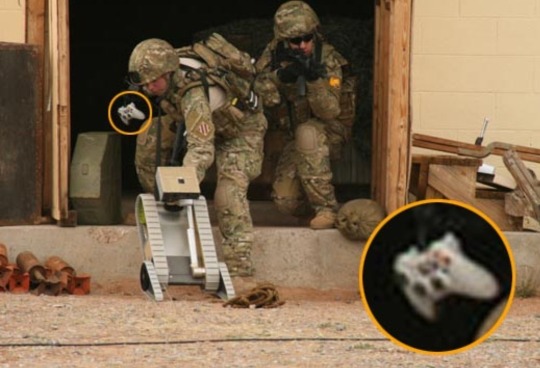
You've probably heard about this one.
But using a game controller for robotic applications, even safety critical ones, isn't unusual! Though it usually takes a multi-million dollar engineering effort to make a system that uses them reliable for a safety function. Exhaustively going through every possible way it could malfunction, and finding a way to address each and every failure mode.
I'd be surprised if they did that - they look like they're violating a few best practices.
First, a wired connection is standard, because it's less likely to drop. Titan's off-the-shelf Logitech controller was using 2.4 GHz WIRELESS tech. It's not impossible to do safety critical communication wirelessly, but that involves specialized safety-rated radio equipment. Just taking a look at what I believe are Logitech's specs for their 2.4 GHz wireless stuff... Uh oh. This ain't it.

Using the same frequency band as Bluetooth and Wifi? Like other devices might be using, and creating interference in that band? I'm reminded of a railway radio failure I saw, where a manufacturer's radio frequency band overlapped with a country's cell signal band. The trains would shut down on major holidays because the airwaves were overwhelmed! Luckily they were engineered well enough to just stop in place, not crash.

That's... Also bad. For safety-critical controls, you want to send the signal right away. TDMA means "Time Division Multiple Access" - AKA "Every user takes turns (time division) so we all can use the same airwaves (multiple access)"
You don't want YOUR FUCKIN SUBMARINE CONTROLS taking turns with anything. They need a dedicated and reliable communication channel. Another safety engineering principle? Isolate your important shit from your unimportant shit. That way your unimportant shit can't fuck with your important shit.
This Whole Damn Lawsuit (pdf link)
This is a lawsuit about the company firing an employee for raising safety concerns. Really valid safety concerns, IMO.
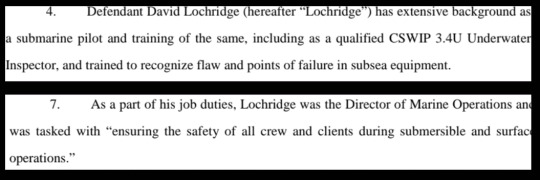
This guy seems really qualified. I'd trust his assessments.
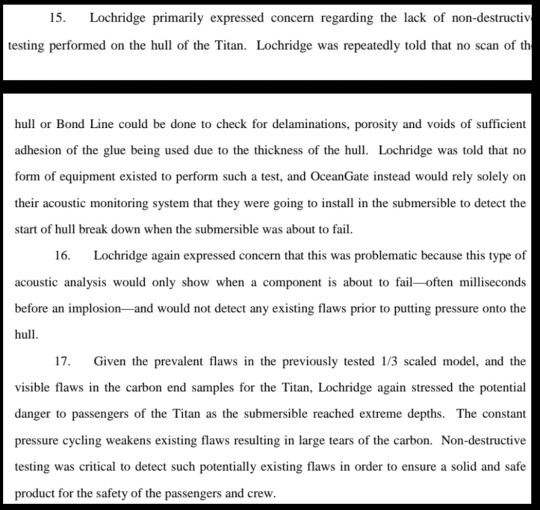
Acoustic monitoring for the kinds of sounds that usually only come shortly before a catastrophic failure? Great - they basically made a "You're going to die now" bell. Too little, too late. Lochridge was right - the hull needs to be tested beforehand!
And flaws in the carbon fibre hull material? A famously brittle material? That isn't generally used for pressure vessels? And they kept on using that instead of any of the industry standard materials?
Invisible or barely visible tears might not seem like a big thing, but they're scary to an engineer! They're often the warning alarm that your material isn't holding up and is losing structural integrity.
I just don't understand the choice of carbon fibre at all - For a vessel subject to high forces, you'd want a material that allows for "elastic deformation" - or the ability to "spring back" to shape instead of break. For example, metal, which is what every submarine I've ever seen is made of. "Carbon-reinforced plastic collapses "catastrophically", says Professor Brizzolara."This is because the material is not ductile like metal alloys and therefore it 'catastrophically' implodes."
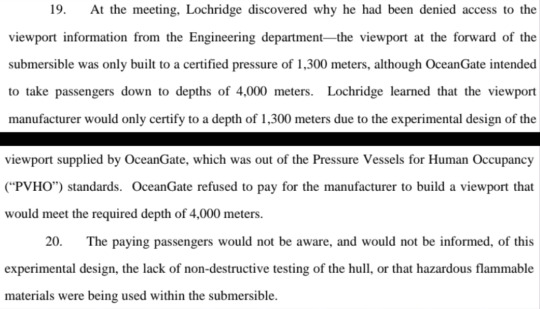
Out of everything here - this terrifies me the most. I have no words.
Ok, I do have some... It's bleak when "hazardous flammable materials in a submersible" is the least worrying thing on a page.
As for the viewport window, there's this thing called a factor of safety. When you engineer something, you don't just make it strong enough, you make it several times stronger than you think it needs to be.
How many times stronger depends on the industry and application. "Pressure vessels use [a factor of safety of] 3.5 to 4.0, automobiles use 3.0, and aircraft and spacecraft use 1.2 to 3.0 depending on the application"
PRESSURE VESSELS USE 3.5 TO 4.0. That window, going 4000m deep? Should have been rated to 14,000 meters at least. They went with 1,300!?!?! That's UNDER ONE TENTH of what it should have been. And I'm not sure if it was ever replaced.
Fuck anyone who doesn't realize safety standards are written in blood.
And I mean that very literally - In the US, safety regulation almost never gets enacted until people die, and those deaths are proven in court, beyond a reasonable doubt, to be due to corporate negligence. Sometimes a lot of people have to die before that standard of proof is met, as companies will dodge culpability for as long as possible. It's one of the ugliest truths about my industry. And for a company to ignore those regulations that came at the cost of people's lives? I'd say they have blood on their hands.

Yeah, in my professional opinion, fuck these guys. They fired their safety guy for doing his job, they didn't work with the certification agency. I hope they're held responsible.
Loooong story short?
I'm genuinely having trouble finding much this company did that wasn't horrifyingly negligent. I'm ending the examples here, but honestly I could keep going.
It's fuckin terrifying they were allowed to do this in the first place. And while I kinda get the "lol rip billionaires" reaction - A company should never be allowed to put people's lives at risk like this. Because if engineering negligence can kill billionaires? It sure as hell can kill any of us with far fewer consequences and far less media attention.
The warning signs were there for years before the accident, and that's the saddest part to me. This was so easily avoidable.
I feel for the guy who tried to warn people - it's a nightmare situation, to fear something you worked with is dangerous, and see your employer (or ex employer) go ahead with it anyway.
What do I figure happened, in the end?
My top guess is a hull failure, resulting from repeated stress of compression and decompression of the carbon fibre material, leading to internal tears or fractures that compromised it's structural integrity, and resulted in a sudden and catastrophic implosion. (An implosion is the opposite of an explosion - it is when something very quickly collapses in on itself, like a can being crushed. Deep underwater, the high pressure of all the water above can cause an implosion.)
Second guess? That window, if they never changed it, could have failed. Same sudden implosion in the end. But I'm waiting for a forensic accident report to say for sure.
legal disclaimer below the cut.
The views, thoughts, and opinions expressed in the text belong solely to the author, and not necessarily to the author's employer, organization, committee or other group or individual.
This text is for entertainment purposes only, and is not meant to be referenced for legal, business, or investment purposes.
This text is based on publically available information, sources may contain factual errors. The analysis provided in this text may contain factual errors, miscalculations, or misunderstandings.
#titanic#titan#titan submersible#titan submarine#engineering#safety engineering#engineering disasters#submarine#submarines#robotics#robots#education#science#tech#stem#oceangate#current events
1K notes
·
View notes
Text
"Crash Chronicles: Unraveling Car Accident Reports, Incident Investigations, and the Science of Safety and Forensic Engineering"
In the intricate web of vehicular mishaps, a comprehensive understanding of car accident reports, incident investigations, safety engineering, and forensic engineering is crucial. "Crash Chronicles" invites you on a journey through the depths of these domains, shedding light on the intricate processes that follow the screech of brakes and the shattering of glass.
Car Accident Reports stand as the initial documentation of an unfortunate event, offering a narrative that investigators and engineers dissect to comprehend the sequence of events leading to the crash. These Car Accident Reports encapsulate vital details such as weather conditions, road markings, and witness statements. A thorough examination is imperative for unraveling the mysteries and discerning patterns that can inform safety measures and engineering improvements.
Incident Investigation take the narrative further, diving into the causes and contributing factors behind the accident. Skilled investigators meticulously piece together evidence, analyzing skid marks, vehicle damage, and surveillance footage. Their goal is not just to assign blame but to uncover the root causes, identifying systemic issues or design flaws that may have played a role. This stage is pivotal for preventing similar incidents in the future and refining safety protocols.
Safety Engineering, an ever-evolving field, is the backbone of accident prevention. Engineers in this discipline leverage their expertise to design vehicles, roads, and traffic systems with safety as the paramount concern. From airbag technology to anti-lock braking systems, safety engineering innovations continuously enhance the protective measures available to drivers and passengers. The insights gained from accident reports and investigations feed directly into this process, influencing the development of safer vehicles and road infrastructure.
Forensic Engineering, often associated with crime scene investigations, plays a unique role in the aftermath of car accidents. Forensic engineers apply scientific principles to analyze materials, evaluate structural integrity, and reconstruct accident scenarios. Their work is pivotal in establishing liability in legal proceedings and, more importantly, in shaping future safety standards. By meticulously examining the physical evidence, these engineers contribute to a comprehensive understanding of the incident and assist in preventing similar occurrences.
In conclusion, "Crash Chronicles" seeks to demystify the world of car accidents, incident investigations, safety engineering, and forensic engineering. The journey from the initial crash report to the forensic reconstruction is a collaborative effort to enhance road safety and minimize the impact of vehicular accidents on lives. By understanding and appreciating the intricacies of each stage, we can collectively contribute to a safer and more secure transportation landscape. Stay tuned for more insights into the fascinating intersection of technology, engineering, and safety that defines the world of vehicular incident analysis.
To know more ....
Contact us : George Rechnitzer Associates
0 notes
Text

In South Korea, some highways utilize rolling barrier systems with plastic rotating barrels. These barriers absorb impact energy and guide vehicles safely during collisions, reducing the risk of flipping.
#South Korea#highways#rolling barriers#plastic barriers#road safety#collision prevention#vehicle stability#EVA barrels#traffic innovation#engineering
276 notes
·
View notes
Text
They make doorstops that are integrated with the alarm system so they auto-disengage in the event of a fire.
At £100 each these are probably non-viable for houses but lots of workplaces have them. Most importantly their convenience removes the temptation for end-users to engineer defeat devices (doorstops).
remembering again the time I had one friend whose OCD included "interior doors can't be closed because what if there's a fire??" living with another friend whose triggers included "my door MUST be closed and locked or I'm Not Safe" and how many problems that caused
sometimes people just have competing needs. there's no one size fits all solution for anything.
6K notes
·
View notes
Text
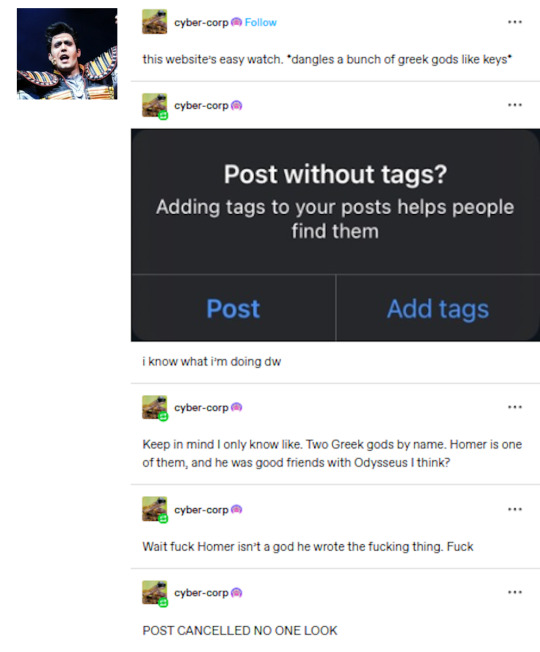



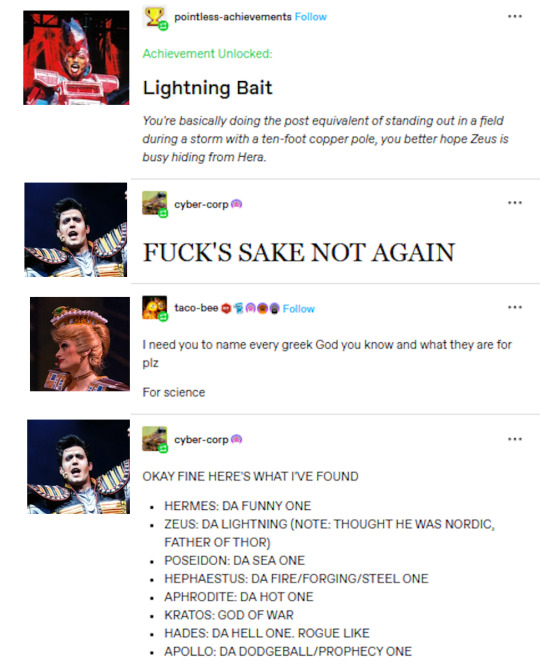


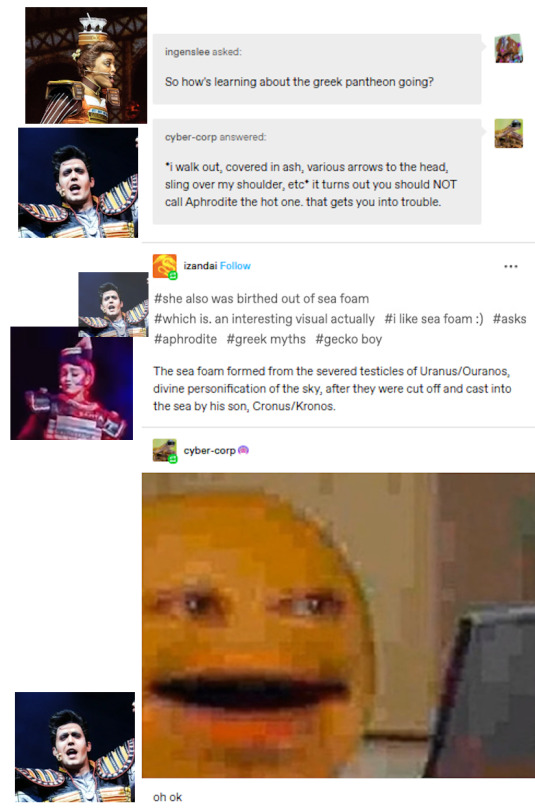




Thank you Tumblr for blessing me with this completely unhinged thread that made me laugh so hard my lungs hurt, and it's associated reblogs and posts/extra funnies.
Today's Starlight Shitposts; Greaseball being introduced to the absolute insanity that is Greek Mythology and everybody else in the group has random chunks of knowledge surrounding this topic except him and he becomes increasingly exasperated.
#starlight express#stex#stex coaches#stex components#stex engines#stex freight#Starlight Shitposts#greek mythology is a whole can of worms OP I feel you there#Just as a disclaimer for safety sake - This isn't a StEx Shitpost going “Lol GB is stupid”#I don't think GB as a character is an idiot or anything even if he spells SORRY wrong in the show#I do HC him as mildly dyslexic but I think he's absolutely capable of being brains as well as brawn
81 notes
·
View notes
Text
The whole Star Wars universe is so insane actually it's making my head hurt
Putting aside the fact that the entire galaxy is interconnected via space travel with more cultures and societies than the human mind can comprehend, the history is so, so old. The spacefaring history of the galaxy goes 100,000 years into the past, that's twice as much as the time between today and the extinction of neanderthals. And look how long it took us to figure out space travel, the history of individual planets will be even older. Look how long ago before the movie timeline SWTOR takes place, and there's already so many ancient ruins. No matter how far back you go, there will always be something older. Lost cities, technology, cultures covering the surfaces of planets. Entire civilizations built on whalefalls they believe to be mountains. So many remains of space vessels scattered on planetary surfaces, and even more that were left to float through space forever, their crews long dead. The spaces between planets are vast and there is nothing that would allow corrosion and decay except the UV radiation from stars. Stray too far from regular hyperspace routes and you might encounter these ghosts.
The entire galaxy is a graveyard
#star wars#going insane here#there's a certain horror to a universe so vast and old#imagine it's the late Old Republic era and you're just some guys with a ship and your navigation fails#and you pop out of hyperspace in the middle of bumfuck nowhere#and your radars detect a ship that just looks weird and doesn't respond to communication#and when you come close enough you see a vessel on the level of our Apollo ships. no hyperdrive. engines based on fossil fuels#the ship is older than your own species#and the entire time you study the lack of basic safety measures present even in the oldest ships you know and the woefully primitive#and unreliable technology and design. you're acutely aware that there used to be people travelling in those
58 notes
·
View notes
Text
We need to figure out how to steal the Imola and Monaco win I don't care
#i dont care how its done#put the illegal engine back in#if mcalren can bend the rules however they like and also bribe for safety cars and penalties#then we should be allowed
25 notes
·
View notes
Text
For those in the specialization of health and safety, improving dexterities and capabilities can open doors to rewarding functions in various industries, from edifice to oil and gas. The European Safety Council (ESC) offers a range of diplomas that focus on workplace safety and the management of occupational perils. Here’s a summary of some of the top diplomas presented by ESC, with key courses conceived to advance your expertise.
#OfQual#RQF#Qualifi#ESC#European Safety Council#IGC#ESC IGC#International Diploma#Safety Engineering#OHSM#PSM#IDHSE#Qualifi Level 7#Level 7 Diploma#Level 7 International Diploma#Level 7 Certificate#RQF Level 7#Grad IOSH#CMIOSH#IOSH#NVQ#Qualifi Level 7 International diploma in OHSM#Qualifi Level 7 International diploma in PSM#ESC’s IDHSE#MSC Uk#Process safety management#International diploma in Health and Safety Engineering#TSP#CSP#ASP
0 notes
Text

#doge#department of government efficiency#elon musk#elon#musk#politics#political#us politics#news#donald trump#president trump#american politics#jd vance#law#nuclear scientist#bomb engineers#safety experts
49 notes
·
View notes
Text



Fiat ESV 1500, 1972. Fiat made 13 versions of the Experimental Safety Vehicle which was based on the rear-engined 500 and also used parts from the 126 for a competition created but the American NHBS (National Highway Safety Bureau, later the National Highway Traffic Safety Administration, NHTSA).
#Fiat#Fiat ESV 1500#1972#safety vehicle#Experimental Safety Vehicle#experimental vehicle#1970s#rear engine#concept#prototype#NHTSA
250 notes
·
View notes
Text
'Artificial Intelligence' Tech - Not Intelligent as in Smart - Intelligence as in 'Intelligence Agency'
I work in tech, hell my last email ended in '.ai' and I used to HATE the term Artificial Intelligence. It's computer vision, it's machine learning, I'd always argue.
Lately, I've changed my mind. Artificial Intelligence is a perfectly descriptive word for what has been created. As long as you take the word 'Intelligence' to refer to data that an intelligence agency or other interested party may collect.

But I'm getting ahead of myself. Back when I was in 'AI' - the vibe was just odd. Investors were throwing money at it as fast as they could take out loans to do so. All the while, engineers were sounding the alarm that 'AI' is really just a fancy statistical tool and won't ever become truly smart let alone conscious. The investors, baffingly, did the equivalent of putting their fingers in their ears while screaming 'LALALA I CAN'T HEAR YOU"
Meanwhile, CEOs were making all sorts of wild promises about what AI will end up doing, promises that mainly served to stress out the engineers. Who still couldn't figure out why the hell we were making this silly overhyped shit anyway.
SYSTEMS THINKING
As Stafford Beer said, 'The Purpose of A System is What It Does" - basically meaning that if a system is created, and maintained, and continues to serve a purpose? You can read the intended purpose from the function of a system. (This kind of thinking can be applied everywhere - for example the penal system. Perhaps, the purpose of that system is to do what it does - provide an institutional structure for enslavement / convict-leasing?)
So, let's ask ourselves, what does AI do? Since there are so many things out there calling themselves AI, I'm going to start with one example. Microsoft Copilot.
Microsoft is selling PCs with integrated AI which, among other things, frequently screenshots and saves images of your activity. It doesn't protect against copying passwords or sensitive data, and it comes enabled by default. Now, my old-ass-self has a word for that. Spyware. It's a word that's fallen out of fashion, but I think it ought to make a comeback.
To take a high-level view of the function of the system as implemented, I would say it surveils, and surveils without consent. And to apply our systems thinking? Perhaps its purpose is just that.
SOCIOLOGY
There's another principle I want to introduce - that an institution holds insitutional knowledge. But it also holds institutional ignorance. The shit that for the sake of its continued existence, it cannot know.
For a concrete example, my health insurance company didn't know that my birth control pills are classified as a contraceptive. After reading the insurance adjuster the Wikipedia articles on birth control, contraceptives, and on my particular medication, he still did not know whether my birth control was a contraceptive. (Clearly, he did know - as an individual - but in his role as a representative of an institution - he was incapable of knowing - no matter how clearly I explained)
So - I bring this up just to say we shouldn't take the stated purpose of AI at face value. Because sometimes, an institutional lack of knowledge is deliberate.
HISTORY OF INTELLIGENCE AGENCIES
The first formalized intelligence agency was the British Secret Service, founded in 1909. Spying and intelligence gathering had always been a part of warfare, but the structures became much more formalized into intelligence agencies as we know them today during WW1 and WW2.
Now, they're a staple of statecraft. America has one, Russia has one, China has one, this post would become very long if I continued like this...
I first came across the term 'Cyber War' in a dusty old aircraft hanger, looking at a cold-war spy plane. There was an old plaque hung up, making reference to the 'Upcoming Cyber War' that appeared to have been printed in the 80s or 90s. I thought it was silly at the time, it sounded like some shit out of sci-fi.
My mind has changed on that too - in time. Intelligence has become central to warfare; and you can see that in the technologies military powers invest in. Mapping and global positioning systems, signals-intelligence, of both analogue and digital communication.
Artificial intelligence, as implemented would be hugely useful to intelligence agencies. A large-scale statistical analysis tool that excels as image recognition, text-parsing and analysis, and classification of all sorts? In the hands of agencies which already reportedly have access to all of our digital data?
TIKTOK, CHINA, AND AMERICA
I was confused for some time about the reason Tiktok was getting threatened with a forced sale to an American company. They said it was surveiling us, but when I poked through DNS logs, I found that it was behaving near-identically to Facebook/Meta, Twitter, Google, and other companies that weren't getting the same heat.
And I think the reason is intelligence. It's not that the American government doesn't want me to be spied on, classified, and quantified by corporations. It's that they don't want China stepping on their cyber-turf.
The cyber-war is here y'all. Data, in my opinion, has become as geopolitically important as oil, as land, as air or sea dominance. Perhaps even more so.
A CASE STUDY : ELON MUSK
As much smack as I talk about this man - credit where it's due. He understands the role of artificial intelligence, the true role. Not as intelligence in its own right, but intelligence about us.
In buying Twitter, he gained access to a vast trove of intelligence. Intelligence which he used to segment the population of America - and manpulate us.
He used data analytics and targeted advertising to profile American voters ahead of this most recent election, and propogandize us with micro-targeted disinformation. Telling Israel's supporters that Harris was for Palestine, telling Palestine's supporters she was for Israel, and explicitly contradicting his own messaging in the process. And that's just one example out of a much vaster disinformation campaign.
He bought Trump the white house, not by illegally buying votes, but by exploiting the failure of our legal system to keep pace with new technology. He bought our source of communication, and turned it into a personal source of intelligence - for his own ends. (Or... Putin's?)
This, in my mind, is what AI was for all along.
CONCLUSION
AI is a tool that doesn't seem to be made for us. It seems more fit-for-purpose as a tool of intelligence agencies, oligarchs, and police forces. (my nightmare buddy-cop comedy cast) It is a tool to collect, quantify, and loop-back on intelligence about us.
A friend told me recently that he wondered sometimes if the movie 'The Matrix' was real and we were all in it. I laughed him off just like I did with the idea of a cyber war.
Well, I re watched that old movie, and I was again proven wrong. We're in the matrix, the cyber-war is here. And know it or not, you're a cog in the cyber-war machine.
(edit -- part 2 - with the 'how' - is here!)
#ai#computer science#computer engineering#political#politics#my long posts#internet safety#artificial intelligence#tech#also if u think im crazy im fr curious why - leave a comment
117 notes
·
View notes
Text
"Decoding Safety: A Deep Dive into Incident Investigation and Traffic Accident Reporting in Melbourne"
In the bustling urban landscape of Melbourne, safety is paramount. From workplace incidents to traffic accidents, understanding the intricacies of incident investigation and accurate traffic accident reporting is crucial for maintaining a secure environment. Let's embark on a comprehensive exploration of these critical aspects, shedding light on safety engineering practices that contribute to the well-being of individuals and the community.
Incident Investigation in Melbourne: A Proactive Approach to Safety
Incident investigation is a proactive approach to identify the root causes of accidents, near misses, or hazardous occurrences. In Melbourne, where safety standards are high, businesses and organizations prioritize incident investigation to enhance safety protocols and prevent future incidents.
Safety engineering plays a pivotal role in incident investigation. It involves applying engineering principles to identify potential hazards, assess risks, and implement measures to mitigate those risks. This multidisciplinary approach ensures a thorough analysis of incidents, helping organizations create safer environments for their employees and stakeholders.
Traffic Accident Reporting: Navigating Melbourne’s Roads Safely
Melbourne's dynamic road network demands a robust system for traffic accident reporting. Accurate reporting not only aids law enforcement but also contributes to the city's ongoing efforts to improve road safety.
When a traffic accident report melbourne occurs, a detailed report becomes a critical document. It outlines the circumstances, contributing factors, and consequences of the incident. In Melbourne, these reports are not only instrumental in legal proceedings but also serve as valuable data for traffic engineers and city planners.
Key Components of Traffic Accident Reports
A well-crafted traffic accident report typically includes:
Accident Overview: A concise description of the accident, including date, time, and location.
Involved Parties: Details about the drivers, passengers, and pedestrians involved.
Environmental Factors: Weather conditions, road surface, and visibility at the time of the accident.
Contributing Factors: Identification of factors such as speeding, distracted driving, or faulty traffic signals.
Injuries and Damages: Documentation of injuries sustained and damages to vehicles or property.
Safety Engineering and its Impact on Incident Investigation
Safety engineering acts as the backbone of incident investigation. By integrating engineering principles into safety protocols, organizations in Melbourne can systematically assess potential hazards and implement effective control measures.
Engineers specializing in safety contribute to incident investigations by:
Root Cause Analysis: Identifying the fundamental causes of incidents to prevent their recurrence.
Risk Assessment: Evaluating potential risks and implementing measures to minimize or eliminate them.
Regulatory Compliance: Ensuring that safety practices align with Melbourne's stringent regulatory standards.
Conclusion: Fostering a Culture of Safety in Melbourne
In conclusion, incident investigation and accurate traffic accident reporting are integral components of Melbourne's commitment to safety. The proactive approach of safety engineering not only enhances workplace safety but also contributes to creating safer roads for everyone.
As Melbourne continues to grow, embracing these practices fosters a culture of safety, ensuring that the city remains a secure and resilient community for all its residents and visitors. Through a collective effort, incident investigation and traffic accident reporting contribute significantly to Melbourne's ongoing journey towards a safer and more sustainable future.
To know more ...
Contact us : George Rechnitzer Associates
0 notes